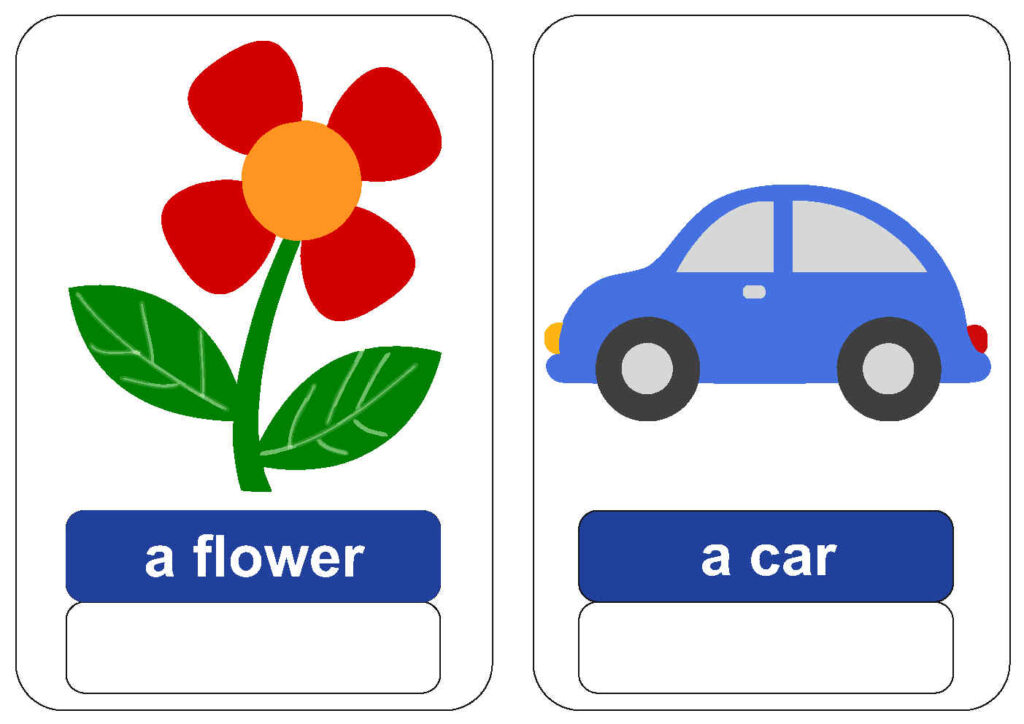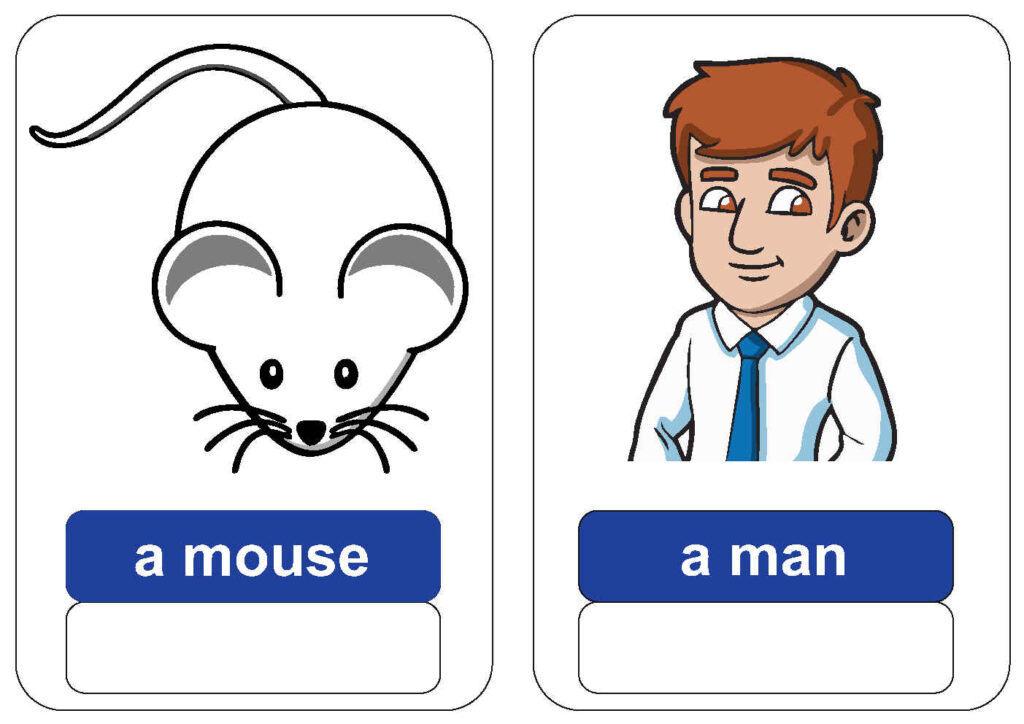
Many language-impaired youngsters struggle to append the /s/ to the end of words to indicate that they are plural nouns. Here’s an easy method for teaching your youngster this skill:
Two-Word Phrases with Plural Nouns
You’ll need sets of two photographs of the same subject for this step of working on plural nouns. Only one of the item should be shown in one photo, and two of the item should be shown in the other picture. One photo might be of a single banana, while the other should be of two bananas. “One banana,” your youngster should remark as he or she points to the solitary image. Then have your youngster repeat “two bananas” while pointing to the double image. You’ll probably have to repeat this for your youngster a few times before he understands what it means. Make the –s at the end louder so he can hear it. Continue doing so until your youngster can do it with whatever image you offer him. For the time being, stick to ordinary plurals that require a –s at the end rather than pictures like “foot/feet.”

Carrier Phrases with Plural Nouns
Use the plural nouns in a carrier phrase like “I observe…” once your kid has mastered the above stage on her own. “I see one banana,” your toddler could say. “I see two bananas,” says the narrator. Make sure your youngster uses the plural –s once again. Continue practicing this until your kid can use plural nouns in basic phrases like this with whatever word she is given.
Structured Conversation with Plural Nouns
Tell your child that you’ll read a book with her and chat about it, but that you’ll be listening for her /s/ sound anytime there are multiples of things. Take a book off the shelf and begin reading. Ask her a question like “what are those?” whenever you encounter plural nouns, and watch if she adds the plural –s at the end. If she doesn’t remember, gently remind her by capturing it, as in “Oh listen! We need to yell carsss.

In Conversational Speech, Plural Nouns
Try listening during regular conversation once your kid has mastered using plural nouns during organized discourse when she knows you’re listening for it. When you hear her make a mistake, kindly urge her to use the plural sound, exactly like you did in the previous stage. She’ll eventually be able to do it on her own without you having to remind her.
Plural Nouns: Examples and Rules
By adding a -s to the end of most single nouns, they become plural. Depending on what letter a word finishes in, there are a variety of rules for pluralization. Because irregular nouns do not follow the rules for plural nouns, they must be learned or searched up in a dictionary.

Rules for Plural Nouns
There are a lot of plural noun rules, and knowing them all is vital since we use nouns so often in our writing. The proper spelling of plurals is frequently determined by the last letter of the single word.
1- to Make Regular Nouns Plural, Add ‑s to The End.
cat – cats
house – houses
2- If the singular noun ends in ‑s, -ss, -sh, -ch, -x, or -z, add ‑es to the end to make it plural.
truss – trusses
bus – buses
marsh – marshes
lunch – lunches
tax – taxes
blitz – blitzes
3- In some cases, singular nouns ending in -s or -z, require that you double the -s or -z prior to adding the -es for pluralization.
fez – fezzes
gas –gasses (note that gases is also an acceptable, and more commonly used, spelling of this plural noun)
4- If the noun ends with ‑f or ‑fe, the f is often changed to ‑ve before adding the -s to form the plural version.
wife – wives
wolf – wolves
Exceptions:
roof – roofs
belief – beliefs
chef – chefs
chief – chiefs

5- If a singular noun ends in ‑y and the letter before the -y is a consonant, change the ending to ‑ies to make the noun plural.
city – cities
puppy – puppies
6- If the singular noun ends in -y and the letter before the -y is a vowel, simply add an -s to make it plural.
ray – rays
boy – boys
7- If the singular noun ends in ‑o, add ‑es to make it plural.
potato – potatoes
tomato – tomatoes
Exceptions:
photo – photos
piano – pianos
halo – halos
With the unique word volcano, you can apply the standard pluralization for words that end in -o or not. It’s your choice! Both of the following are correct:
volcanoes
volcanos

8- If the singular noun ends in ‑us, the plural ending is frequently ‑i.
cactus – cacti
focus – foci
9- If the singular noun ends in ‑is, the plural ending is ‑es.
analysis – analyses
ellipsis – ellipses
10- If the singular noun ends in ‑on, the plural ending is ‑a.
phenomenon – phenomena
criterion – criteria
11- Some nouns don’t change at all when they’re pluralized.
sheep – sheep
series – series
species – species
deer –deer
You need to see these nouns in context to identify them as singular or plural. Consider the following sentence:
Mark caught one fish, but I caught three fish.
However, when it comes to fish, things can get a little complicated.

Plural Noun Rules for Irregular Nouns
Irregular nouns follow no specific rules, so it’s best to memorize these or look up the proper pluralization in the dictionary.
child – children
goose – geese
man – men
woman – women
tooth – teeth
foot – feet
mouse – mice
person – people
What is a plural noun?
A plural noun is the form of a noun used to show there are more than one. Most nouns simply add –s or –es to the end to become plural.
What is an example of a plural noun?
“Kids” is the plural noun form of “kid.” Some nouns have an irregular plural form; for instance, the plural noun of “child” is “children,” not “childs.”
What is the difference between singular and plural nouns?
Singular nouns represent only one thing, but plural nouns represent more than one. If someone stands alone we call them a “person” (singular), but if there’s more than one person, we call them “people” (plural).






